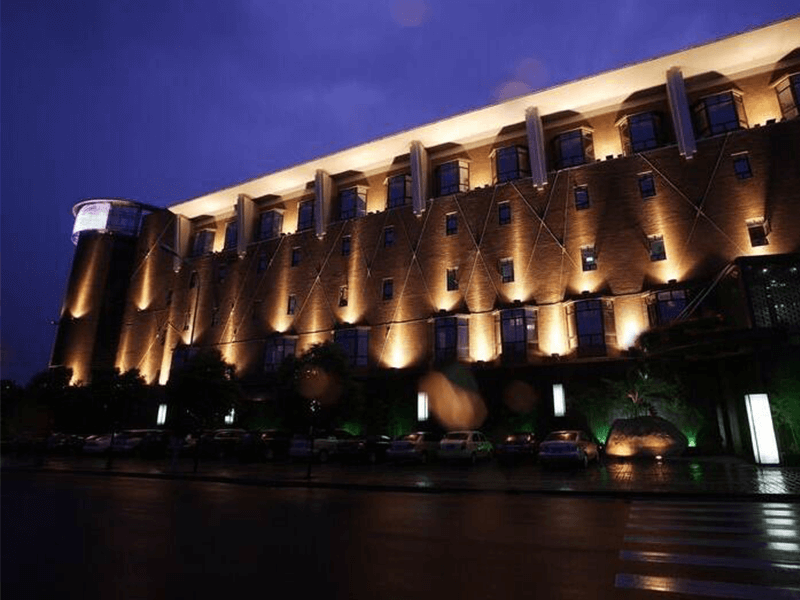Wash Lighting: Wash lighting floods the entire facade with a soft and even glow, enhancing the overall ambiance of the building. It is commonly used to create a welcoming and inviting appearance, especially for large architectural surfaces.
Grazing: Grazing involves placing fixtures close to the facade’s surface, casting light along the surface at a steep angle. This technique highlights the texture of the building’s materials, adding depth and visual interest to flat walls.
Uplighting: Uplighting involves placing light fixtures at ground level, aiming the light upward to illuminate the lower portion of the facade. This technique is ideal for highlighting vertical architectural elements, creating a sense of grandeur, and drawing attention to intricate details near the ground.
Downlighting: Unlike uplighting, downlighting places fixtures above the facade, directing light downward. It creates a cozy and inviting atmosphere, accentuates the roofline, and provides practical illumination for outdoor spaces.
Silhouetting: Silhouetting is achieved by placing fixtures behind architectural elements, such as columns or sculptures, creating a striking contrast between the illuminated structure and the dark background. This technique adds drama and mystery to the facade.
Shadowing: Shadowing involves placing fixtures to cast shadows on specific areas of the facade, adding depth and dimension to the building. This technique highlights unique design elements or creates an artistic visual effect.
Color-changing LED Lighting: The dynamic interplay of colors can breathe life into a building’s facade, allowing it to transition with time and occasions. Color-changing LED lighting systems enable architects and designers to customize the appearance of the building, aligning it with events, seasonal themes, or branding initiatives.
Projection-Mapping: This cutting-edge technique involves using projectors to overlay moving or static images onto the facade, transforming it into a canvas for captivating visual displays and storytelling. Projection mapping can create immersive experiences, drawing attention to the building’s unique architectural elements.
Interactive Lighting: With technological advancements, interactive facade lighting has become a compelling option. Sensors can be integrated into the facade to respond to people’s movements or environmental changes, making the building come alive in response to its surroundings.
Pixel Mapping: This technique leverages individual light sources, such as LEDs, to form a matrix that can display intricate patterns, images, or animations. Pixel mapping allows for unparalleled creative freedom and precision in illuminating the facade.
Laser Lighting: Utilizing powerful laser projectors, this technique enables precise and intense beams of light to be directed at specific building elements, creating a mesmerizing spectacle that captivates viewers.
Fiber Optic Lighting: Ideal for creating a starry night effect or emphasizing small architectural details, fiber optic lighting utilizes tiny fiber strands to deliver light to specific locations without heat emission, making it a versatile and efficient option.
